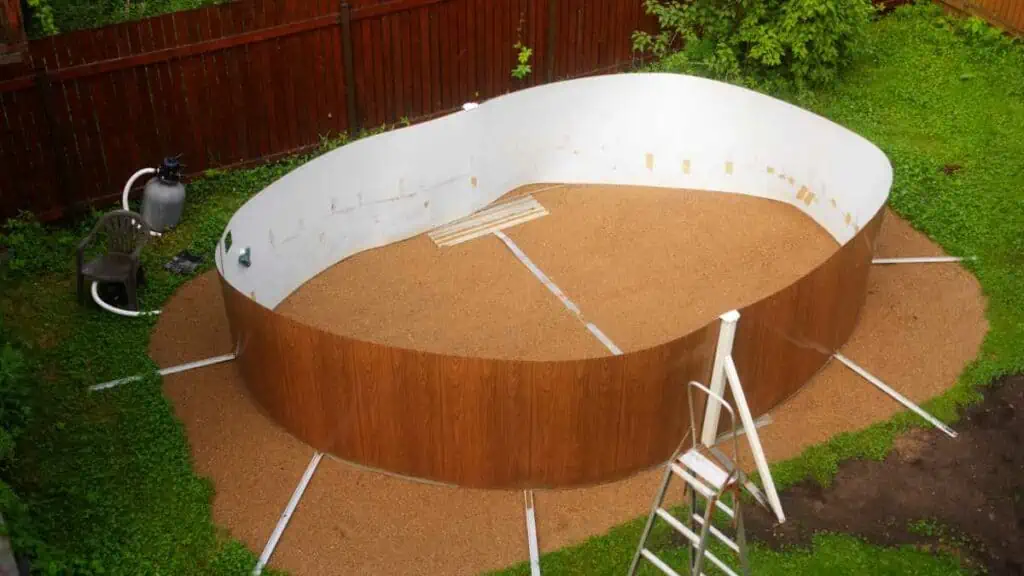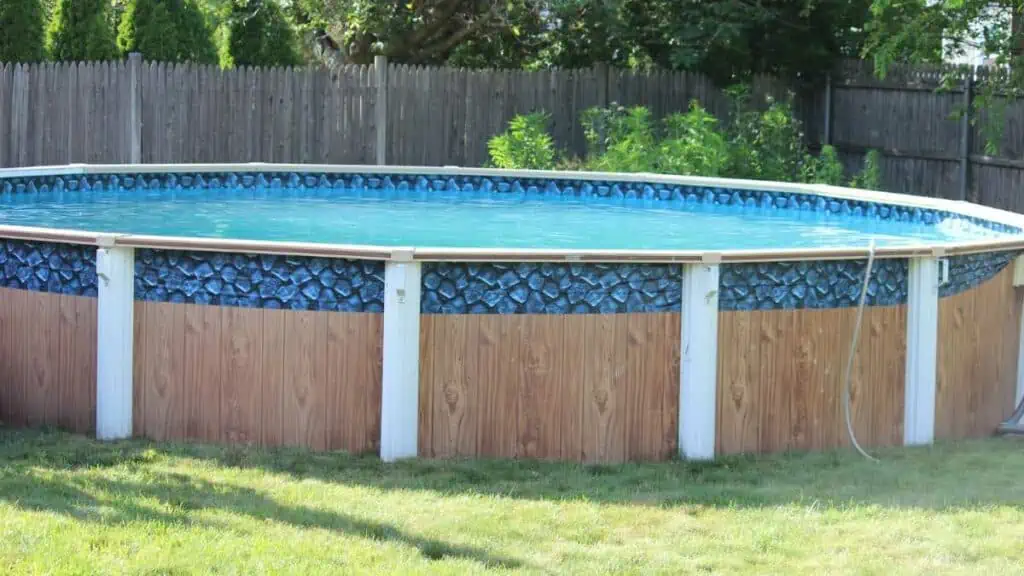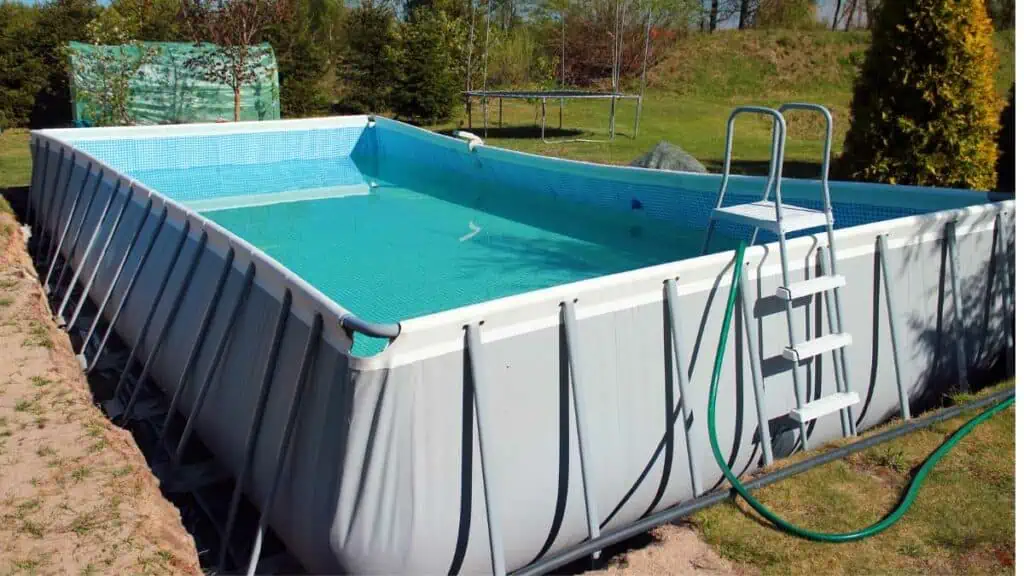Building a standard in-ground concrete-lined or even a fibreglass swimming pool can cost a fortune given the expenses involved, especially the people that need to be hired and the heavy machinery that needs to be rented.
This, however, begs the question, could you theoretically put a cheaper above-ground pool into the ground so that it acts like a standard pool with all the advantages? The short answer is yes.
However, although it is not something I would recommend, there is a right way to do it without risking the integrity of your pool.

Why put an above ground pool in the ground?
The first thing that may pop into your mind when you read this article is why someone would even put a pool designed to be above the surface within the ground. There are a few reasons for this which we shall cover.
Firstly, normal swimming pools in the ground simply look better because they are not obstructing the way, and you can see the surface of the water clearly and easily.
Secondly, normal swimming pools are much easier to get in and out of. This is because they are in the ground, and you do not need to travel up a ladder or some other platform, simply drop right into the pool.
Finally, a swimming pool that has been integrated into the ground is a lot more efficient with space and can give the area a more open feel which is nice to have when you are trying to create a backyard that seems comfortable and like a nice place to relax.
Can you put any above ground pool in the ground?
You should be very careful when you choose an above ground pool if you intend to sink it in the ground fully or even partially.
The pool you buy should be as structurally rigid as possible, preferably one with steel panels or some other rigid structure, similar to the pool in the picture below. The soft-sided pool further down the page would not be suitable.

Note: You should check with the manufacturer before buying as sinking an above ground pool in the ground may invalidate any warranty.
How to put an above ground pool in the ground
To put an above-ground pool into the ground, a series of steps need to be followed to ensure that you get it done properly and without an issue.
The following is a list that itemizes these actions in chronological order so you can follow them as a step-by-step guide when applying the technique to your pools.
1) Digging the hole
Firstly, and perhaps most obviously, you need to dig a hole for the pool. The size of the hole should be a foot or two bigger in terms of diameter. This allows easy access to work on the pool during the assembling phase.
Depending upon the size of the pool, you might also need heavy machinery if the required hole is particularly large. This step might add significantly to the cost of the whole operation.
2) Assembling the pool
Now that you have a space for the pool ready, you can proceed with step two. Above-ground pools rarely come assembled, so you should be prepared to receive a bunch of parts you will have to put together.
To save on time, effort, and weight, we recommend doing this process in the hole you already dug. Simply put the pieces into the hole and start assembling the pool over there. By doing this, you will need to move the pool less, which can be a lifesaver for large items such as this one.
3) Partially backfilling
It is important to remember that above-ground pools are not designed to take inward pressure from their sides. Therefore, if you fill the dirt into the sides of the pool after constructing it, there is a high likelihood of collapse.
Instead, the way to go about it is to first fill the pool with water so that it has the pressure required to resist the force applied by the dirt once you fill in the hole.
Now that you have done this step, your above-ground pool has been successfully installed within the ground, and you are ready to use it.
It is important to note that if the pool is put fully in the ground and then backfilled with soil, there is a risk of collapse every time it is drained of water.
Personally, I would never backfill if I were to fully sink an above ground pool in the ground. Where feasible I would build some form of deck or other structure around the pool to cover the gap that could be removed which would mean:
- when emptying the pool there was no danger of collapse due to the pressure from the dirt
- if maintenance was needed to the outside structure of the pool then access would be available
- If you needed to replace the pool with another you would not need to excavate again to remove it
If not backfilling then there is always a possibility that the sides of the hole could collapse so I would recommend using some form of shuttering, perhaps a retaining wall, against the hole sides to prevent this.
Partially or semi inground installation
To eliminate this risk, an alternative is to partially put the pool in the ground, where half of it is above ground and half is below.
This method saves on excavation costs and reduces the likelihood of a collapse since only half of the pool is being pressed upon by the soil.

Putting the pool partially in the ground
One thing to note is that with the pool put fully into the ground, every time you drain it of water, you risk the entire thing collapsing. The best way to eliminate this risk is to use an in-between method where half the pool is under the ground and half is above it. This has a few distinct advantages.
Firstly, it saves on excavation costs as the hole does not have to be as deep. Secondly, because only half the pool is being pressed upon by the force of the soil around it, the chances of a collapse are much lower.
Finally, it still offers the same benefits as a standard pool in the ground, namely, the ease of access and a sense of open space.
Conclusion
In summary, putting above ground pool in ground is possible with the correct steps, and it can provide the benefits of a standard in-ground swimming pool at a lower cost.
However, personally, I wouldn’t recommend putting an above ground pool inground as the work involved would probably not be worth it.
If you are considering this option, rather than just leveling the ground, it is important to follow the steps carefully to ensure the pool remains stable and safe for use.





Leave a Reply